latest thoughts on sub $200 cartridges?
69.109.170.189 |
||
| Posted on February 28, 2011 at 08:42:19 | ||
|
Posts: 322
Location: Port Townsend, WA Joined: December 29, 2003 |
I recently finished an Edwin Yang designed 6SL7 phono preamp, and with a stock SL1200 table, stock cable and a $60 Grado cart it kills my Rega Jupiter CD player! Now I'm thinking that it is time to upgrade the cartridge. I have searched and read a number of posts about relatively inexpensive cartridges, but would like to hear current thoughts about them. In the $200 range, give or take a bit, what would you get? | |
| I agree with your preference John..., posted on February 28, 2011 at 16:25:32 | |
|
Posts: 6828
Location: Glen Burnie, MD USA Joined: December 18, 2003 |
But I don't think that's a surprise to anyone who knows me. I do have an engineering type question. Since the higher inductance of a traditional MM/MI cartridge combines with the capacitance and resistance of the phono preamp and forms a low pass filter, does this filter have effects on frequencies below the effective frequency of the filter? Since this effective frequency using a traditional MM/MI cartridge is at the upper limit of human hearing, I am asking whether this low pass filter has any effects on harmonics of the effective frequency (in this case within the audible spectrum). My question comes from my limited understanding of tone controls in preamps. Preamp designs started dropping tone controls from their designs due to the negative effects that those filters had on frequencies that were multiples of the effective frequency designed into the tone control. Since the MM/MI cartridge forms a low pass filter, I am thinking there isn't a free ride there either. If my limited understanding is correct and the MM/MI cartridge forms a low pass filter around 20kHz and that filter has effects on multiples of that effective frequency then we have a negative side effect. Perhaps phase issues or other things we disposed of tone controls for... Let me know if I am off base here John. Thanks, Ed Life is analog...digital is just samples thereof |
| Second the 2M Blue (nt), posted on February 28, 2011 at 18:26:58 | |
|
Posts: 670
Location: Southwest USA Joined: April 3, 2003 |
. |
| RE: Always?, posted on March 1, 2011 at 08:49:33 | |
|
Posts: 24045
Location: Central Kentucky Joined: December 20, 2000 Contributor Since: January 29, 2004 |
> Actual measurements always trump theory. Wrong! Actual measurements always support truth and fact if they are done correctly. Therefore, if theory is based in truth and fact, actual measurements will support theory. It is clear to me that you have never made any phase measurements nor do you seem to understand the theory. From my experience, I still prefer moving coil cartridges to all high-output cartridges that I've heard. Furthermore, it is possible to buy an adequate moving coil preamp at a reasonable price. I personally have built a Bugle configured for 60-dB gain and it sounded quite nice. Furthermore, I have owned the DL-301/II cartridge and played it for a number of years in my Thorens TD-126/SME III turntable. The DL-301/II also sounded quite nice. Edit: I wasn't considering the phono stage when I made my recommendation, so if this cartridge is not compatible then perhaps a high-output cartridge will be required. In that case I really don't have a good recommendation other than to switch to low-output moving coil as soon as possible. I personally wouldn't spend any more money on high-output cartridges. Best regards, |
| RE: no I wish, I thought I read somewhere they were being discontinued..., posted on March 1, 2011 at 14:29:29 | |
|
Posts: 24045
Location: Central Kentucky Joined: December 20, 2000 Contributor Since: January 29, 2004 |
You don't have to move back to Stevenson's alignment. Why not pick a different Löfgren "A" alignment? That's what I did with my DL-103R on the SL-1200. You can print a custom protractor with Conrad Hoffman's program. Use Löfgren's "A" alignment with spindle-to-pivot distance of 215-mm and inner and outer grooves of 59.413-mm and 143.82-mm respectively. That gives you 0.5-mm less overhang and null-points of 65-mm and 119-mm. Best regards, John Elison |
| thank you John, I will do that this weekend when time permits...kind regards..Theron....NT, posted on March 1, 2011 at 14:32:14 | |
|
Posts: 790
Location: Maryland Joined: June 21, 2004 |
NT
-Theron Day |
| I'm sorry. I shouldn't have been so argumentative..., posted on March 1, 2011 at 16:51:43 | |
|
Posts: 24045
Location: Central Kentucky Joined: December 20, 2000 Contributor Since: January 29, 2004 |
I believe that Jim Hagerman's cartridge loading model is is still valid and I also believe that placing a cartridge's electrical resonance withing the audible frequency range would certainly cause some sort of audible problem. However, it is not really worth arguing about and I apologize. Best regards, John Elison |
| Thanks for the response John..., posted on March 1, 2011 at 17:36:33 | |
|
Posts: 6828
Location: Glen Burnie, MD USA Joined: December 18, 2003 |
It makes sense. I spent a lot of money back in the day on a lot of cartridges and felt disappointed for one reason or the other. This is a possible explanation of a measurable and audible difference. Ed Life is analog...digital is just samples thereof |
| You're welcome! /nt\, posted on March 1, 2011 at 18:01:35 | |
|
Posts: 24045
Location: Central Kentucky Joined: December 20, 2000 Contributor Since: January 29, 2004 |
|
| For the record..., posted on March 2, 2011 at 06:10:03 | |
|
Posts: 6828
Location: Glen Burnie, MD USA Joined: December 18, 2003 |
The phase issue is only one factor that determines the audible differences between MM/MI and MC cartridges. I was just making an observation. I know that the Cinemags are the current price/performance champs if you want to go for a stepup trannie but I'm not a stepup man. I have used an active headamp since I switched to a LOMC back in 1979. Stepup trannies add their own factors to the perceived sound. Some do their job really well and others not so well. Like all components. I like the flexibility of an active headamp. You can change the loading without effecting the gain of the thing which is not possible with a passive component like the stepup. Its a personal choice like all things in this hobby. An active headamp brings into play the noise of an additional gain stage. This is not the case of a stepup. The stepup has its own issues and is not a free ride either. Ed Life is analog...digital is just samples thereof |
| RE: Measurable differences, posted on March 2, 2011 at 08:13:48 | |
|
Posts: 24045
Location: Central Kentucky Joined: December 20, 2000 Contributor Since: January 29, 2004 |
> The graphs above just don't look like they reflect the measured response of a V-15V. This is well documented. I've been measuring phono cartridge frequency response for more than 25-years. Can you show me a frequency response graph that you've measured? My test records end at 20-kHz, but all the graphs I've measured from high-output cartridges seem to take a downward turn at the 20-kHz point. Moving coils, on the other hand, seem to remain level or take an upward turn at the 20-kHz point. I think you are going to have to present all your well documented evidence if you wish to refute Hagerman's model. It is based on established electrical engineering principles that can be found in any electronics text book. Best regards,  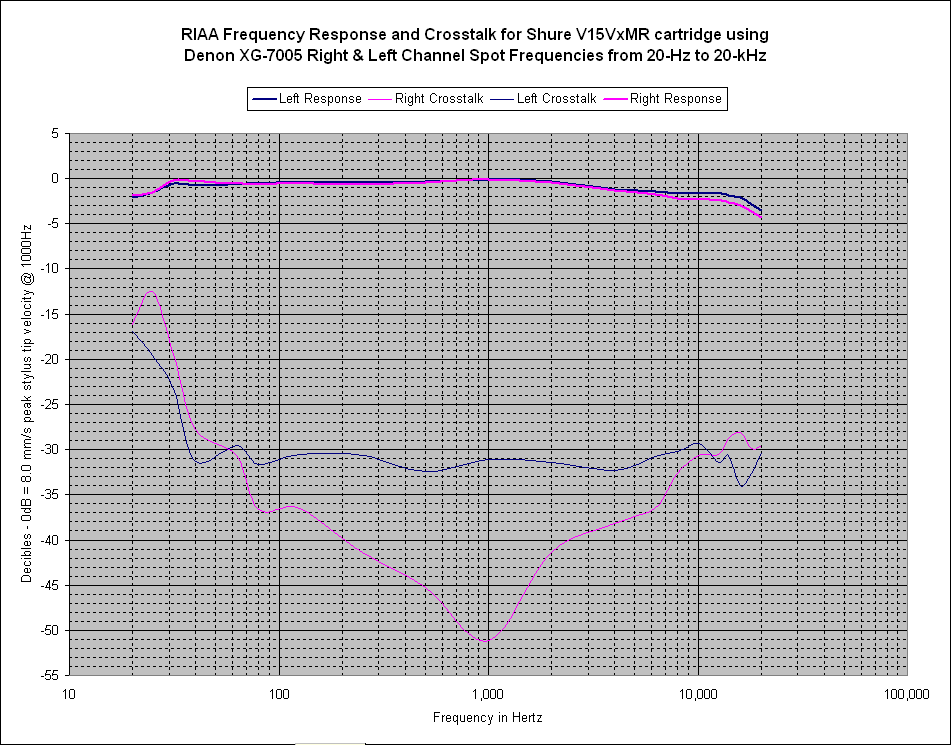 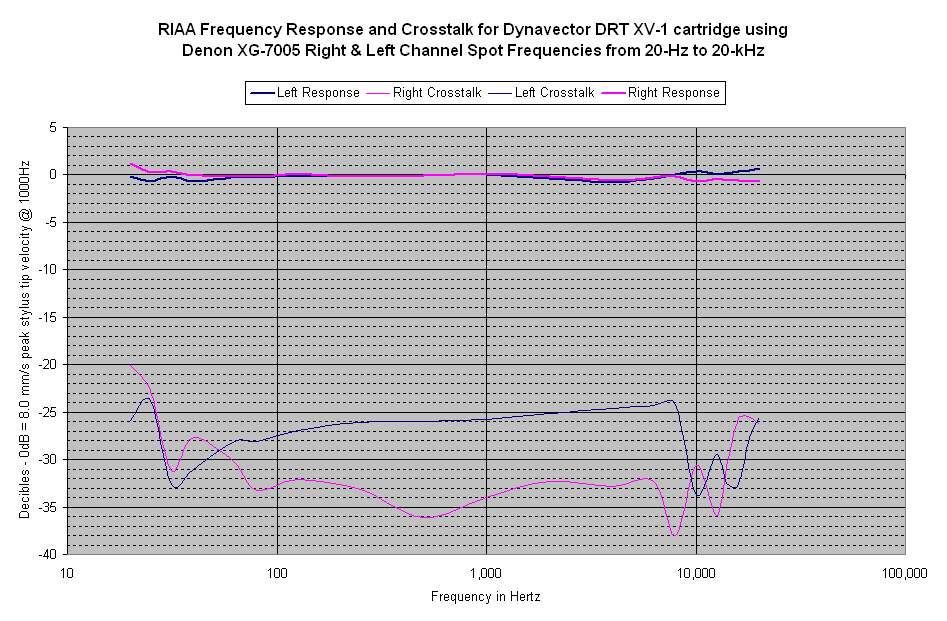  |
| ;-), posted on March 3, 2011 at 09:22:06 | |
|
Posts: 24045
Location: Central Kentucky Joined: December 20, 2000 Contributor Since: January 29, 2004 |
|
| Its really not Hagermann's model..., posted on March 3, 2011 at 12:49:02 | |
|
Posts: 6828
Location: Glen Burnie, MD USA Joined: December 18, 2003 |
So to speak. The stuff on the Hagermann site is a pretty good example of the electrical characteristics of a cartridge interfaced into a phono preamp load. Its not theory, its just plain electrical engineering. That's how they get the loading recommendations they come up with for various cartridges. That plus a bit of listening. I'm not bashing MM or MI cartridges, I'm just trying to understand why I didn't prefer the sound of the cartridges I owned many years ago. There had to be a reason that I found so many cartridges lacking. The point I'm trying to make, and John tried to make, is that the electronics and science is not theory. Its just the way it is. A low pass filter has effects on frequencies below the effective frequency of the filter. That's why tone controls are frowned upon in modern designs or why modern preamps have tone control bypass switches in the design. The tone control doesn't just effect the place it is supposed to effect, it effects frequencies lower (for low pass filters) and above (for high pass filters) the intended points. The loading of a high inductance cartridge is a low pass filter and it reckons that the low pass filter will effect the frequencies below 20kHz. Not theory, just electronics. Whether this is objectionable or not is up to the listener. Ed Life is analog...digital is just samples thereof |
| Yes but we begin with a phase problem..., posted on March 4, 2011 at 05:17:07 | |
|
Posts: 6828
Location: Glen Burnie, MD USA Joined: December 18, 2003 |
At the input where it is amplified and then subject to the rest of the preamp's circuit related issues. Starting with a phase issue is not a good way to begin. Its the KISS principle at work. Don't present a signal with added problems to be amplified if you don't wnat that content in the first place. If the preamp in question accounted for the phase shift somehow then fine, but not so fine for a lower/higher inductance cartridge who's phase shift would occur in a different spectrum. Just a bad start...thats all. Ed Life is analog...digital is just samples thereof |
| Theoretically speaking..., posted on March 5, 2011 at 20:54:34 | |
|
Posts: 6828
Location: Glen Burnie, MD USA Joined: December 18, 2003 |
This could be one of the reasons that LOMC users prefer those cartridges over the MM/MI or HOMC variants. In practice there are many mitigating factors but there is little disagreement that LOMCs or low inductance MI/MM cartridges have a more extended frequency range and tend to sound more transparent. Of course this is also subject to all of the problems present in the amplification chain and what is gained by the low inductance could be lost in the needed extra amplification. In the end there is no free ride and what works for one of us cannot be assumed a solution for others. I have heard numerous other rigs with LOMCs and high output MM cartridges. Whatever advantage the low inductance cartridges have it cannot be realized unless the care is taken to match it to the right rig. A top quality MM can be very enjoyable but I have noted that the low level detail retrieval ability usually is found with the low output cartridges. I guess its a Murphy factor and the cartridges that have the better ability to retrieve very low level details present the most challenging problems to amplify that output. Like anything in life, there is no free ride or perfect answers. Just choices. Ed Life is analog...digital is just samples thereof |
| and appr. $100 for a pair of Cinemag step-ups?, posted on March 17, 2011 at 21:00:13 | |
|
Posts: 492
Joined: September 10, 2010 |
Could you tell me where to get these step-ups for $100? Thanks, neo BIRD LIVES |


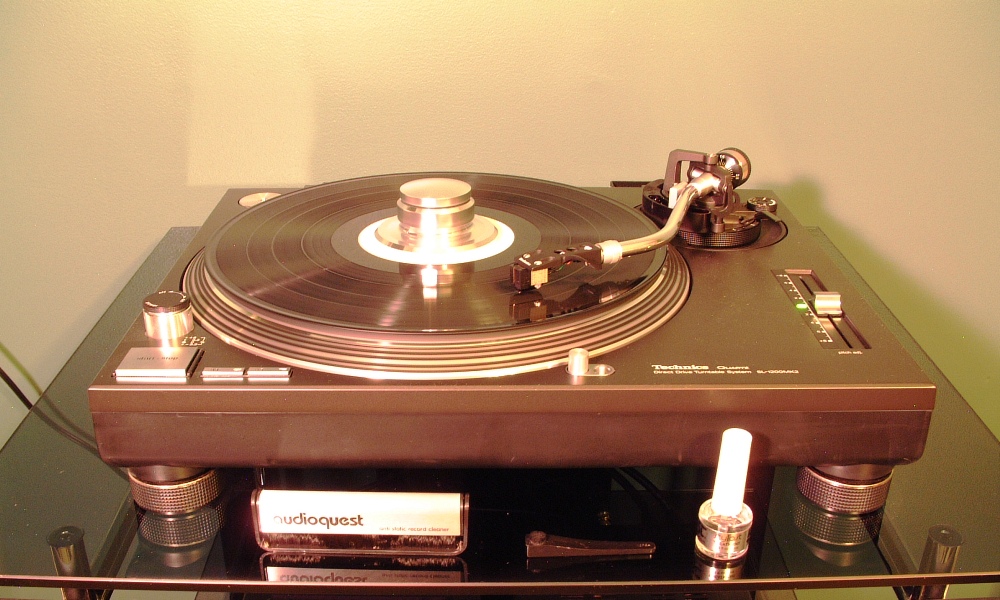

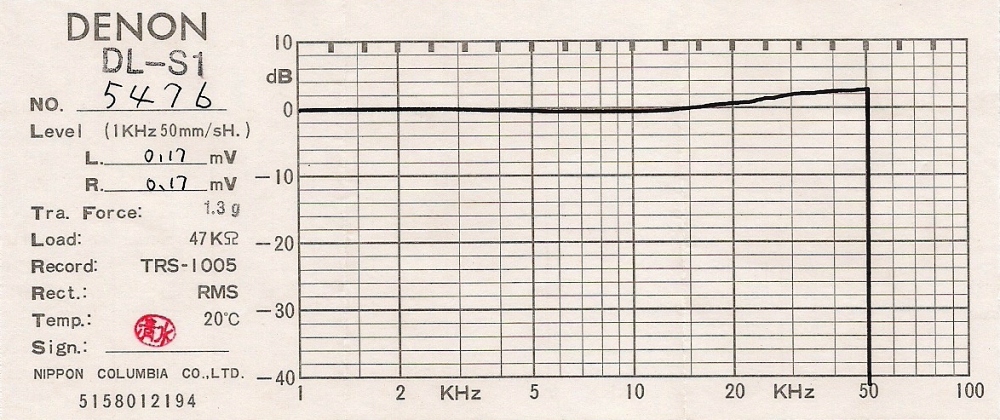

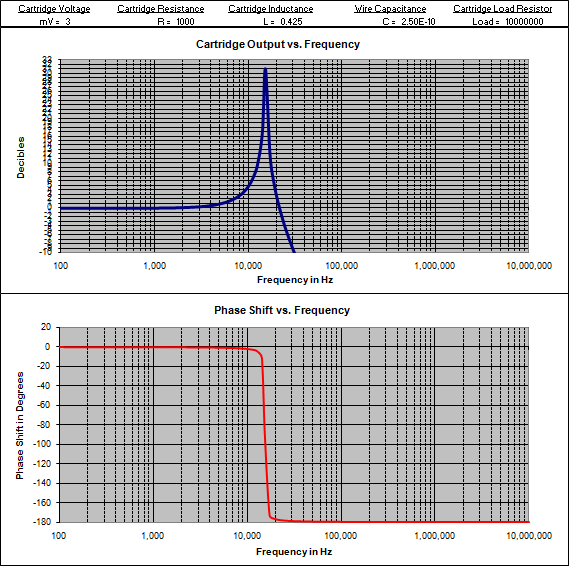 ......
...... 
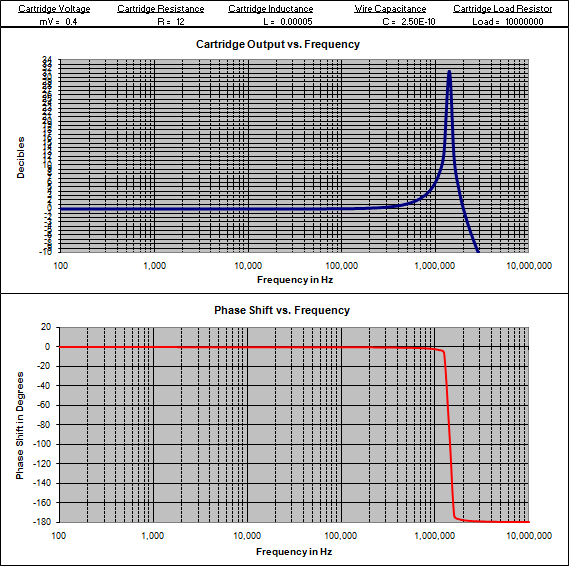 ......
...... 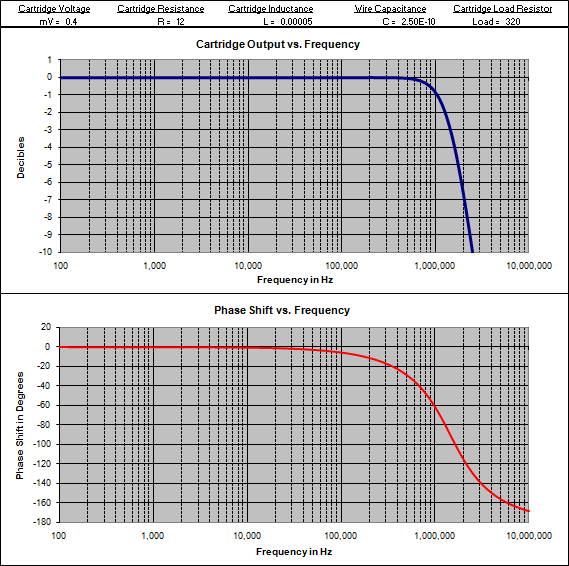

 ......
...... 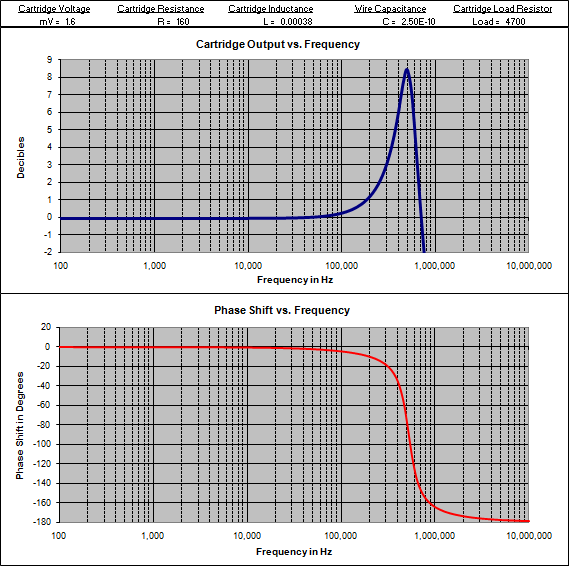
 ......
...... 
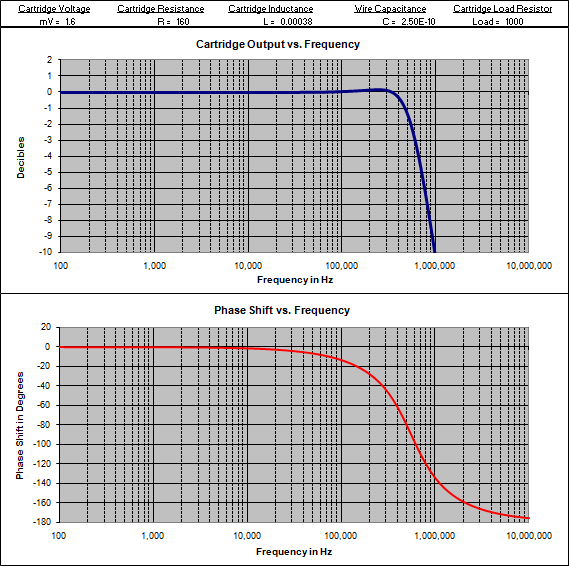 ......
...... 